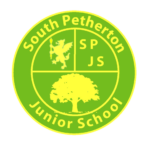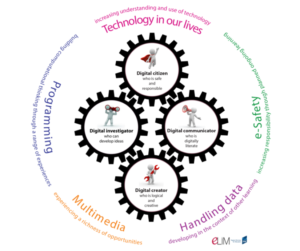How do we teach Computing?
• Each child participates within weekly Computing lessons, planned from Somerset’s eLIM Computing Progressions in Programming, e-Safety, Multimedia, Handling Data and Technology in our Lives.
• Each child, in addition, is taught basic skills that progressively develop as they move up throughout the school
• The school uses laptops which are stored and charged within fixed charging cabinets
• Outcomes are saved within each child’s profile – children log on to the school network with their name and password.
• Children are given computing vocabulary to use and understand; this is specific to each year group
How do we inspire a love of Computing?
Our Computing curriculum gives children the opportunity to access a wide range of resources and to develop their skills in typing, word processing, coding, researching, making databases, creating e-books, films and presentations and much more. Teachers aim to link Computing planning with other curriculum areas such as History, Geography, Science and Maths to engage learners further.
We aim for the curriculum to be fun, engaging and enjoyed by all learners. Pupils are given the opportunity to make choices about how they present findings, what they decide to present or research and to create outcomes which can be shared with others in the school. For example:
• Year 6 and Year 3 children worked together in National Story Telling week to create oral video stories
• Year 5 children create travel brochures linked to their Geography work about Italy
• Year 4 children link their data handling work with Science topics
• Year 3 children make e-books which are shared with other members of the school community
How do we help children who find Computing difficult?
For SEND learners, technology can provide opportunities for them to be in control of their world. They have the right to access the technology and access learning to use that technology effectively. Class teachers will differentiate activities in many ways to allow all children equal opportunities within the Computing curriculum. This may be by modifying an activity to make it simpler, modifying an outcome/expectation or offering peer or adult support in order for a child to access an activity more easily.
How do we assess Computing?
Planning identifies key questions for teachers to ask to check children’s knowledge and skills both before, during and at the end of lessons. Self and formative assessment is used by the class teacher and/or teaching assistant during whole class or group teaching. Open questions are used to challenge children’s thinking and learning. Children’s confidence and difficulties are observed and used to inform future planning.
Progress is assessed on an on-going basis using the Somerset ‘I can’ statements for each area of Computing. This ensures teachers are aware of individual pupil’s progress in computer science, information technology and digital literacy. Each class teacher maintains a record, indicating pupils that are working beyond or below age-expected attainment. This is passed on to the next class teacher. Children are encouraged to evaluate their own and others’ work in a positive and supportive environment, including peer assessment.
Impact of Covid-19/National school closures on Computing
Children at South Petherton Junior School had limited access to the Computing curriculum during 2020 and 2021, since sharing the laptops across the whole school was not possible within our risk assessments. During the academic year 2021/22, class teachers focussed Computing units around core skills and prioritised skills and objectives to bridge gaps in learning. Year group basic skills, as identified in our Computing progression, was the focus for this year and units were modified (sometimes by teaching previous year’s units) to reflect this.




